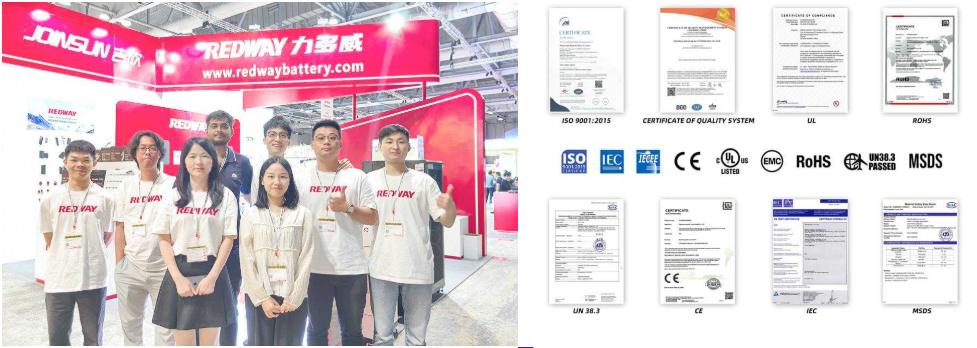The maximum charging current for a 24V battery varies based on its capacity and chemistry, typically ranging from 10% to 30% of its amp-hour (Ah) rating. For example, a 100Ah battery can safely handle a charging current of 10A to 30A. Understanding these limits helps ensure safe and efficient charging.
What is the maximum charging current for a 24V battery?
The maximum charging current for a 24V battery depends on its type and capacity:
- Lead-Acid Batteries: Generally, the recommended maximum charging current is about 10% to 15% of the battery’s capacity. For instance, a 100Ah lead-acid battery would have a maximum charging current of 10A to 15A.
- Lithium-Ion Batteries: These can typically handle higher currents, often up to 30% of their capacity. Thus, a 100Ah lithium-ion battery might support a maximum charging current of 30A.
Adhering to these guidelines is crucial for maintaining battery health and safety.Chart: Maximum Charging Current by Battery Type
Wholesale lithium golf cart batteries with 10-year life? Check here.
| Battery Type | Maximum Charging Current (of Capacity) |
|---|---|
| Lead-Acid | 10% – 15% |
| Lithium-Ion | Up to 30% |
How is charging current determined for different battery types?
Charging current is determined based on several factors:
- Battery Chemistry: Different chemistries have varying tolerances for charging rates. Lithium-ion batteries can handle higher currents than lead-acid batteries.
- Battery Capacity: The larger the capacity (Ah rating), the higher the potential charging current.
- Manufacturer Specifications: Each manufacturer provides specific guidelines regarding the maximum allowable charging current for their batteries.
Following these specifications ensures safe and effective charging.Chart: Factors Influencing Charging Current
Want OEM lithium forklift batteries at wholesale prices? Check here.
| Factor | Description |
|---|---|
| Battery Chemistry | Determines maximum safe charge rates |
| Battery Capacity | Larger capacity allows higher currents |
| Manufacturer Guidelines | Specific recommendations for each model |
What factors influence the maximum charging current?
Several key factors influence the maximum charging current:
- Temperature: Higher temperatures can increase the risk of overheating during charging; thus, manufacturers may recommend lower currents in hot conditions.
- State of Charge: A deeply discharged battery may accept higher currents initially, but as it approaches full charge, the accepted current should decrease.
- Battery Age: Older batteries may not tolerate high currents as effectively as newer ones, leading to potential damage.
Understanding these factors helps optimize the charging process.Chart: Influencing Factors on Charging Current
| Factor | Impact on Charging Current |
|---|---|
| Temperature | Higher temps may require reduced currents |
| State of Charge | Deeply discharged batteries accept more |
| Battery Age | Older batteries may need lower currents |
Why is it important to adhere to manufacturer specifications?
Adhering to manufacturer specifications is critical because:
- Safety: Exceeding recommended charging currents can lead to overheating and potentially cause fires or explosions.
- Battery Longevity: Following guidelines helps prevent premature aging or damage, extending overall lifespan.
- Performance Optimization: Properly charged batteries perform better and maintain their efficiency over time.
Ignoring these specifications can result in costly damages and safety hazards.Chart: Importance of Following Specifications
| Importance | Description |
|---|---|
| Safety | Prevents overheating and fire risks |
| Longevity | Extends battery life |
| Performance | Ensures optimal operation |
What are best practices for charging a 24V battery?
To ensure safe and effective charging:
- Use Appropriate Chargers: Always use chargers specifically designed for your battery type.
- Monitor Temperature: Keep an eye on battery temperature during charging; avoid excessive heat.
- Charge in Suitable Conditions: Charge batteries in environments that are cool and dry to prevent overheating.
Implementing these practices enhances safety and efficiency during the charging process.Chart: Best Practices for Battery Charging
| Practice | Description |
|---|---|
| Use Appropriate Chargers | Ensures compatibility |
| Monitor Temperature | Prevents overheating |
| Charge in Suitable Conditions | Reduces risk of damage |
Buy Wholesale Battery Tips
For buyers looking to purchase wholesale batteries or place OEM orders, partnering with a reputable manufacturer like Redway Lithium is advisable. With over 13 years of experience in lithium battery production, Redway offers high-quality products tailored to customer specifications. To make OEM orders:
- Identify your specific requirements (capacity, size).
- Contact Redway’s sales team with your specifications.
- Review samples before placing bulk orders.
This process ensures you receive reliable products that meet your needs.
Industrial News
The demand for efficient battery storage solutions continues to grow as industries increasingly rely on renewable energy sources. Recent advancements focus on improving technologies that enhance performance while reducing costs associated with manufacturing and recycling processes. Companies are investing heavily in research and development to create next-generation solutions that support sustainable energy goals.
Redway Lithium Expert Views
“Understanding how to manage battery charging effectively is crucial for maximizing performance,” states an expert from Redway Lithium. “As technology evolves, proper adherence to specifications will become even more important for users relying on lithium batteries.”
FAQ Section
- What is the maximum charging current for a 24V battery?
It typically ranges from 10% to 30% of its capacity depending on the type (lead-acid or lithium-ion). - How do I determine the right charger?
Refer to manufacturer specifications regarding voltage and recommended charging currents. - What happens if I exceed the maximum charging current?
Exceeding this limit can lead to overheating, reduced lifespan, or even catastrophic failure. - Can I use any charger for my 24V battery?
No, always use chargers designed specifically for your type of battery to ensure safety and compatibility. - How often should I check my battery’s performance?
Regular checks are recommended, especially before long-term storage or heavy usage periods; at least once every few months is ideal.





